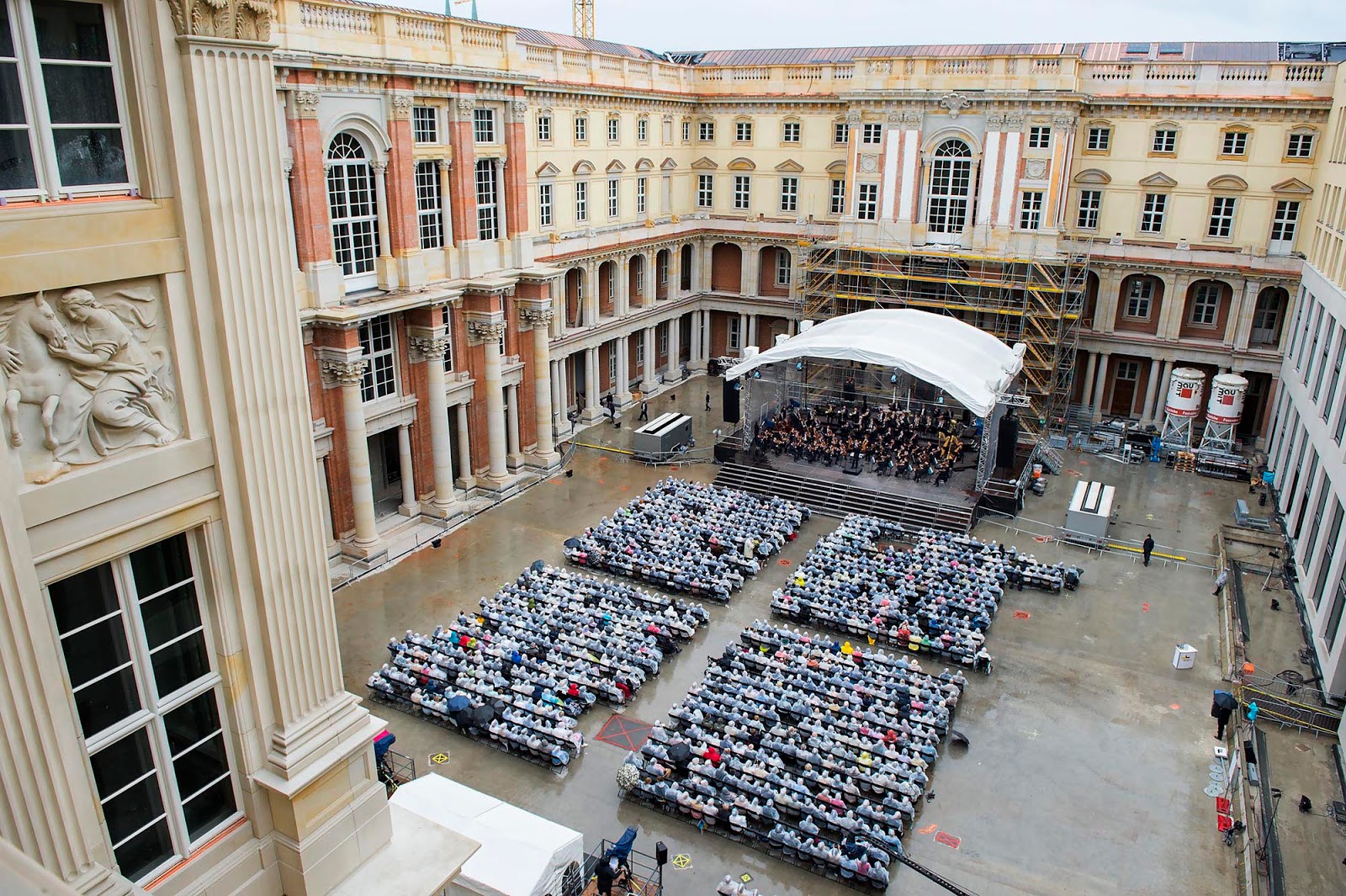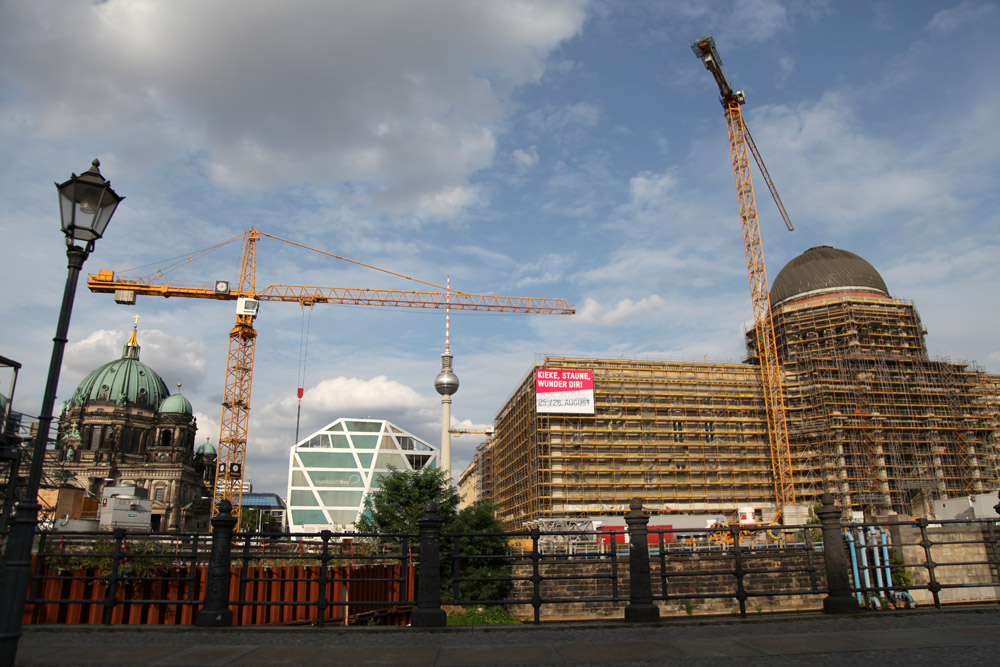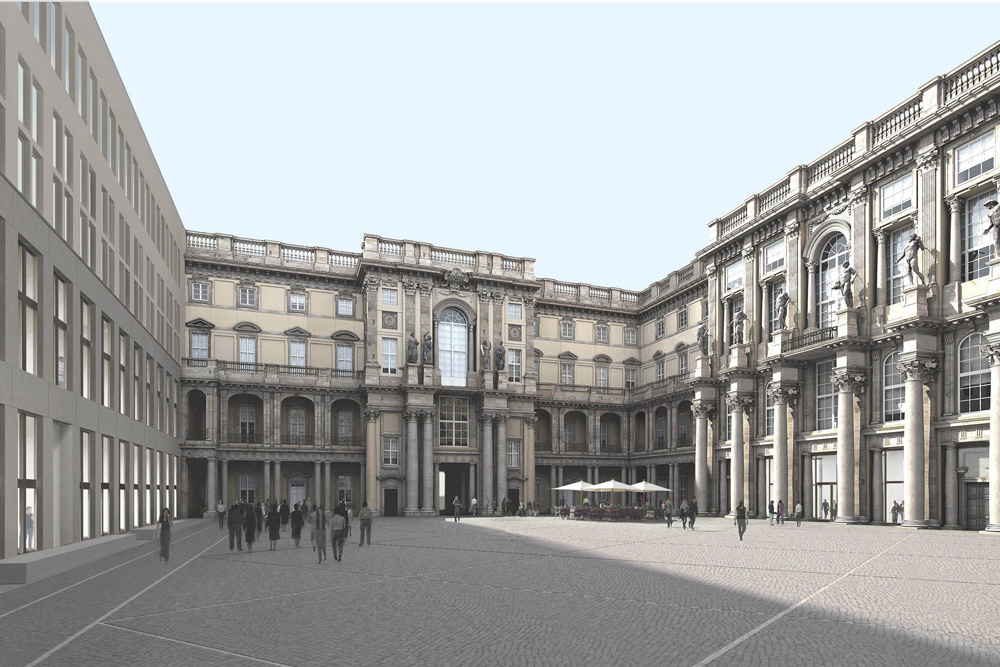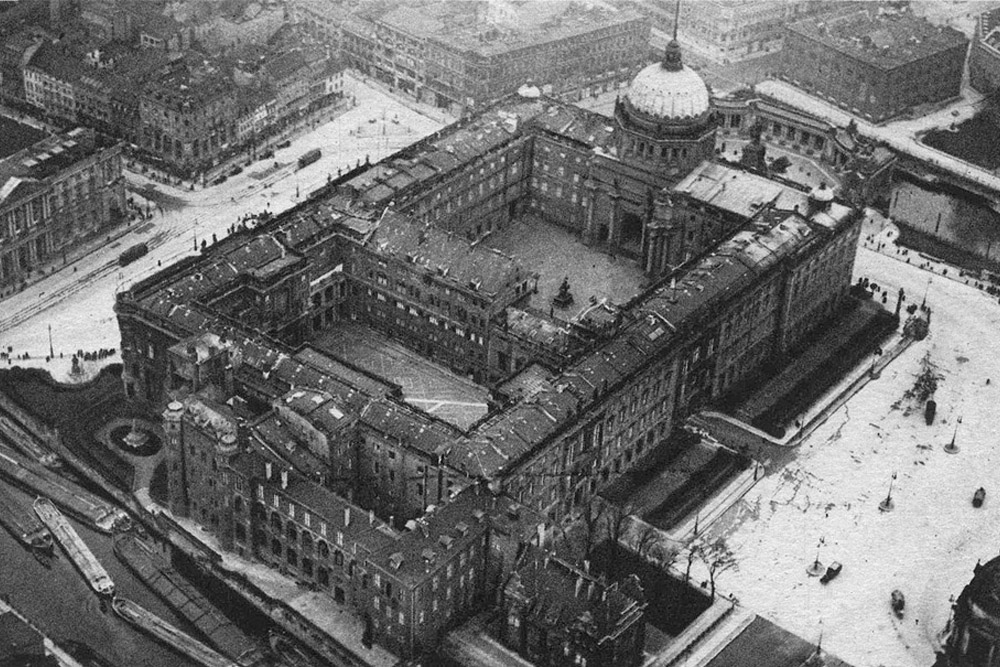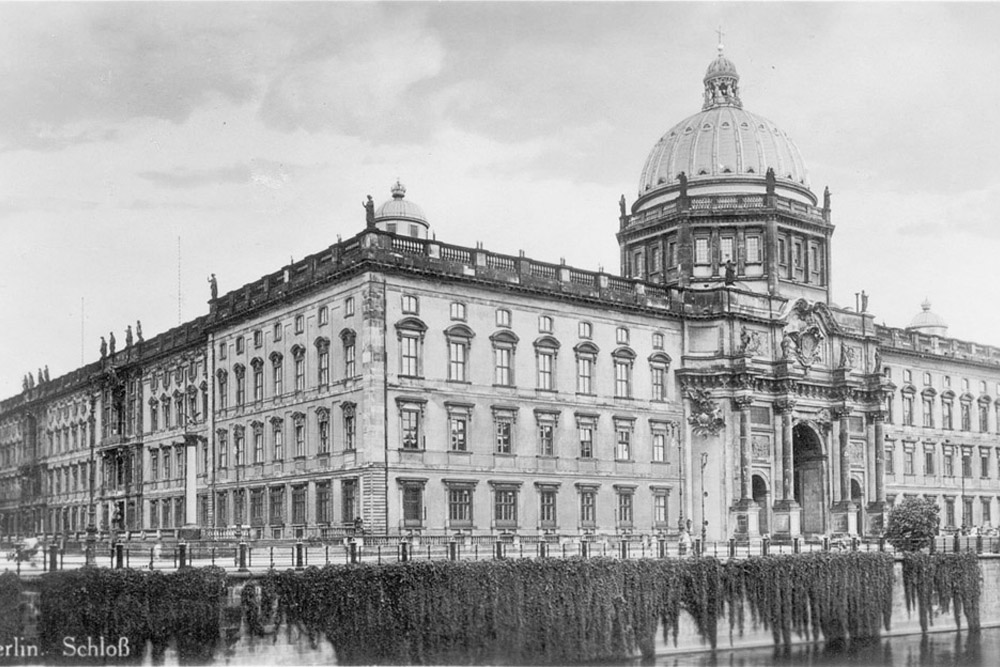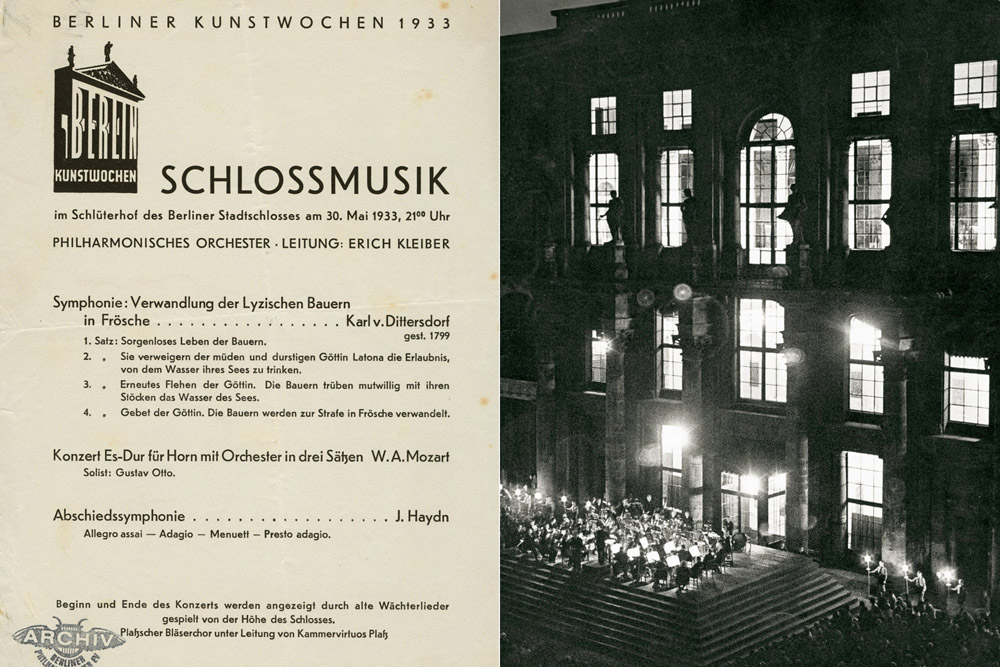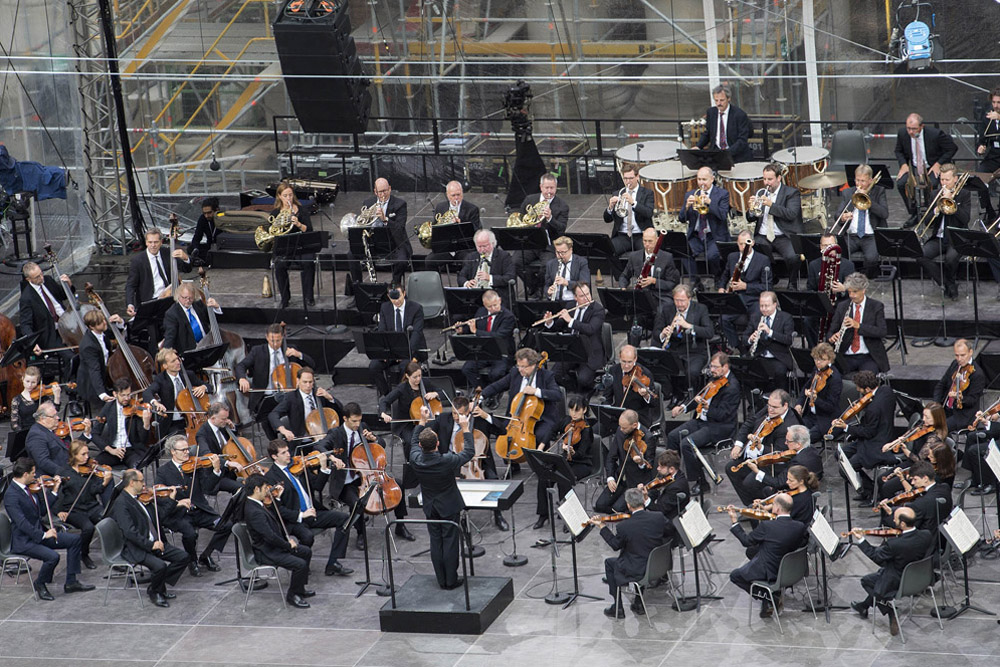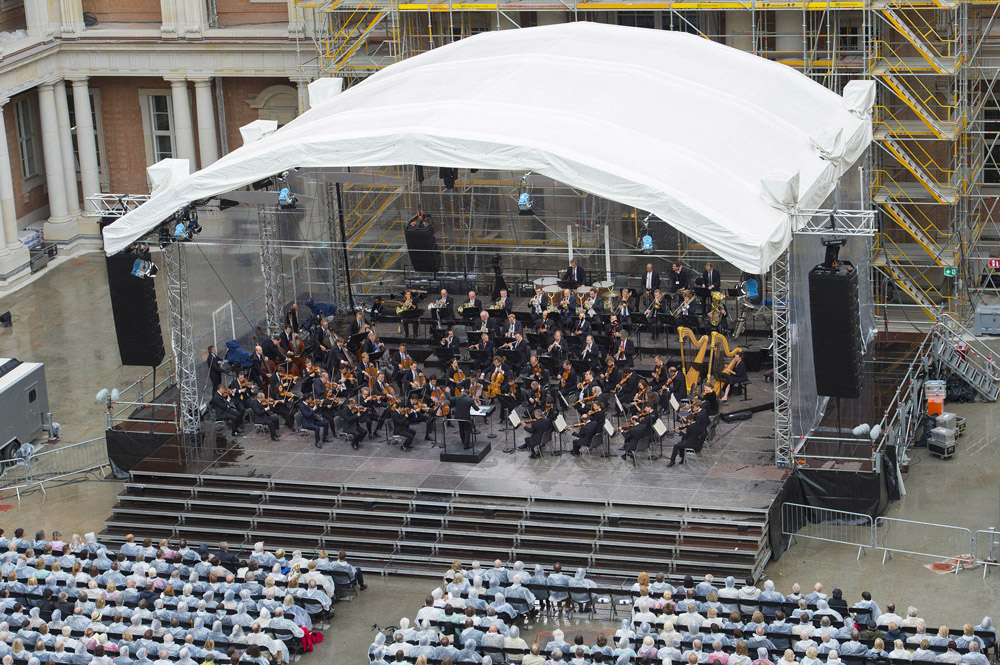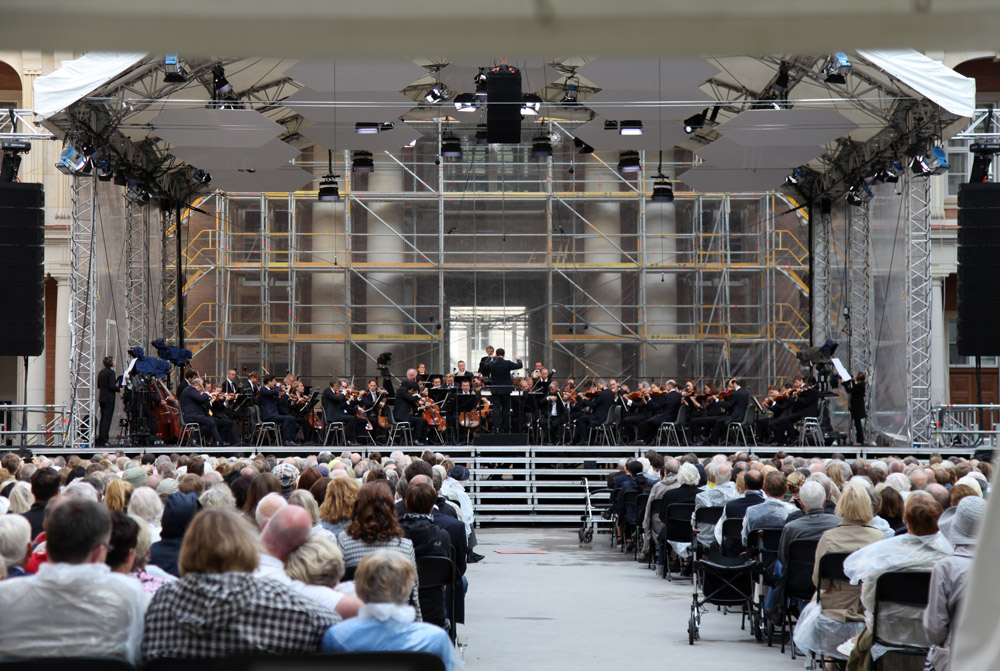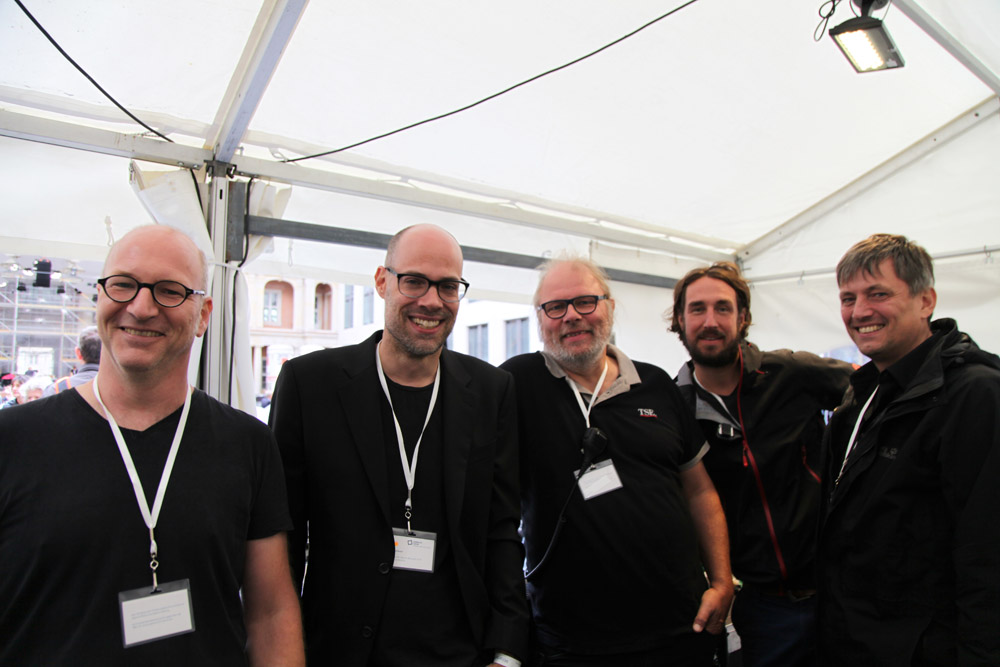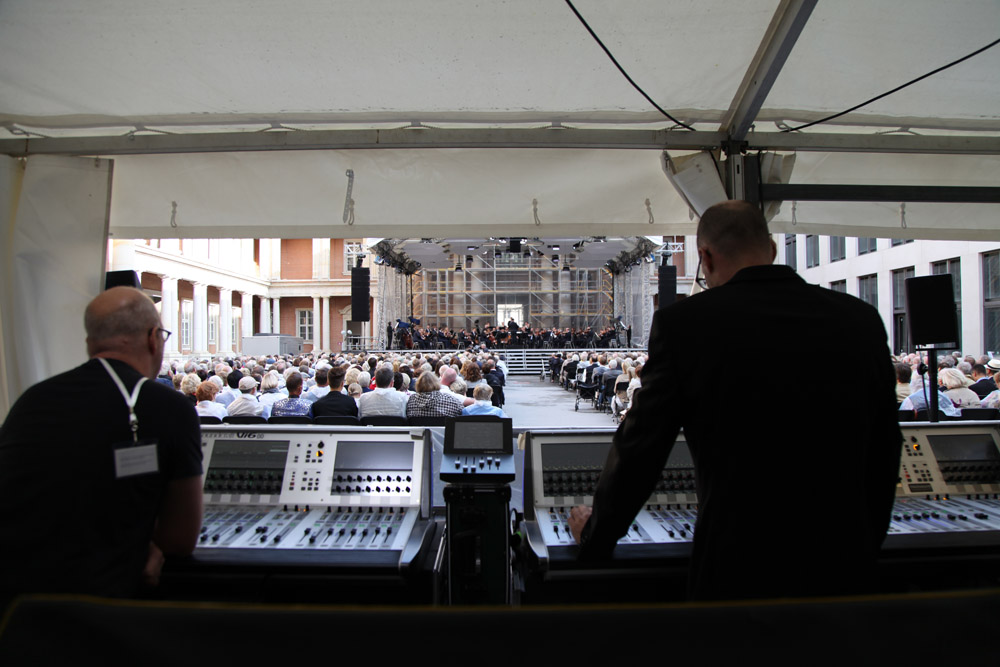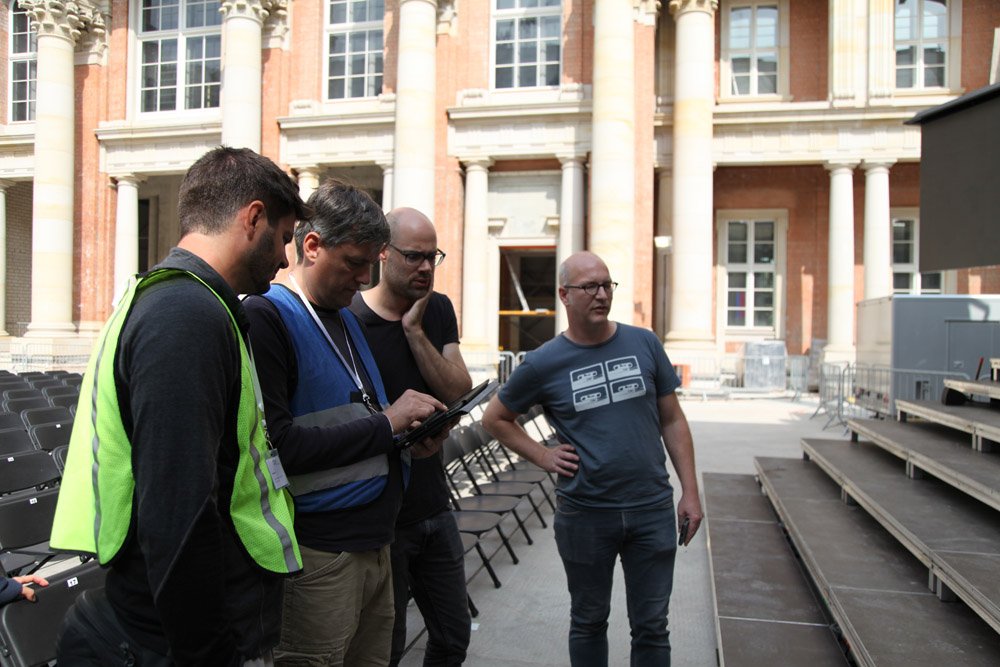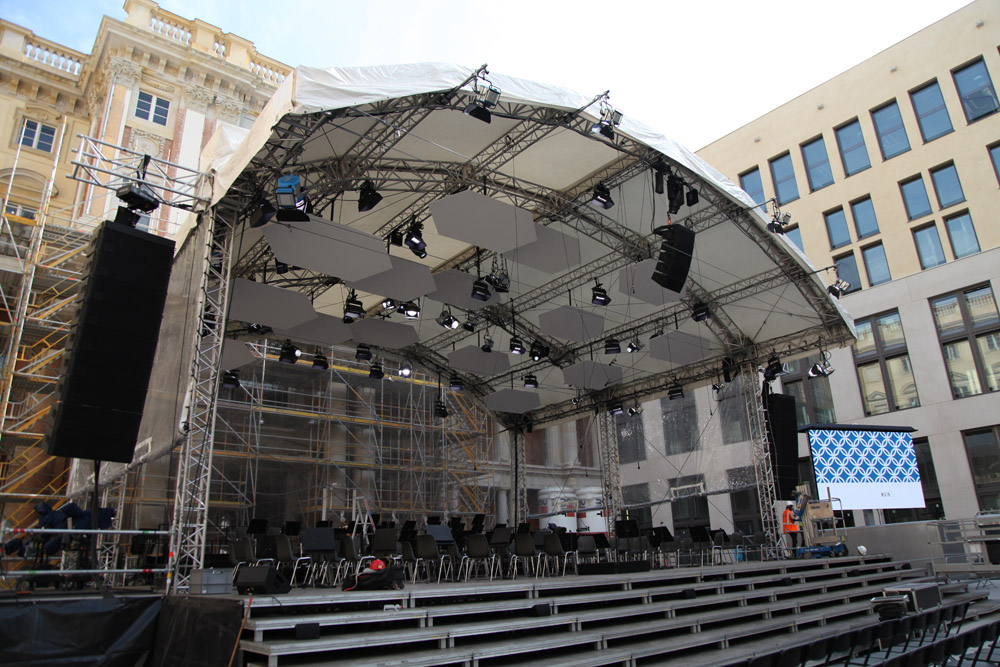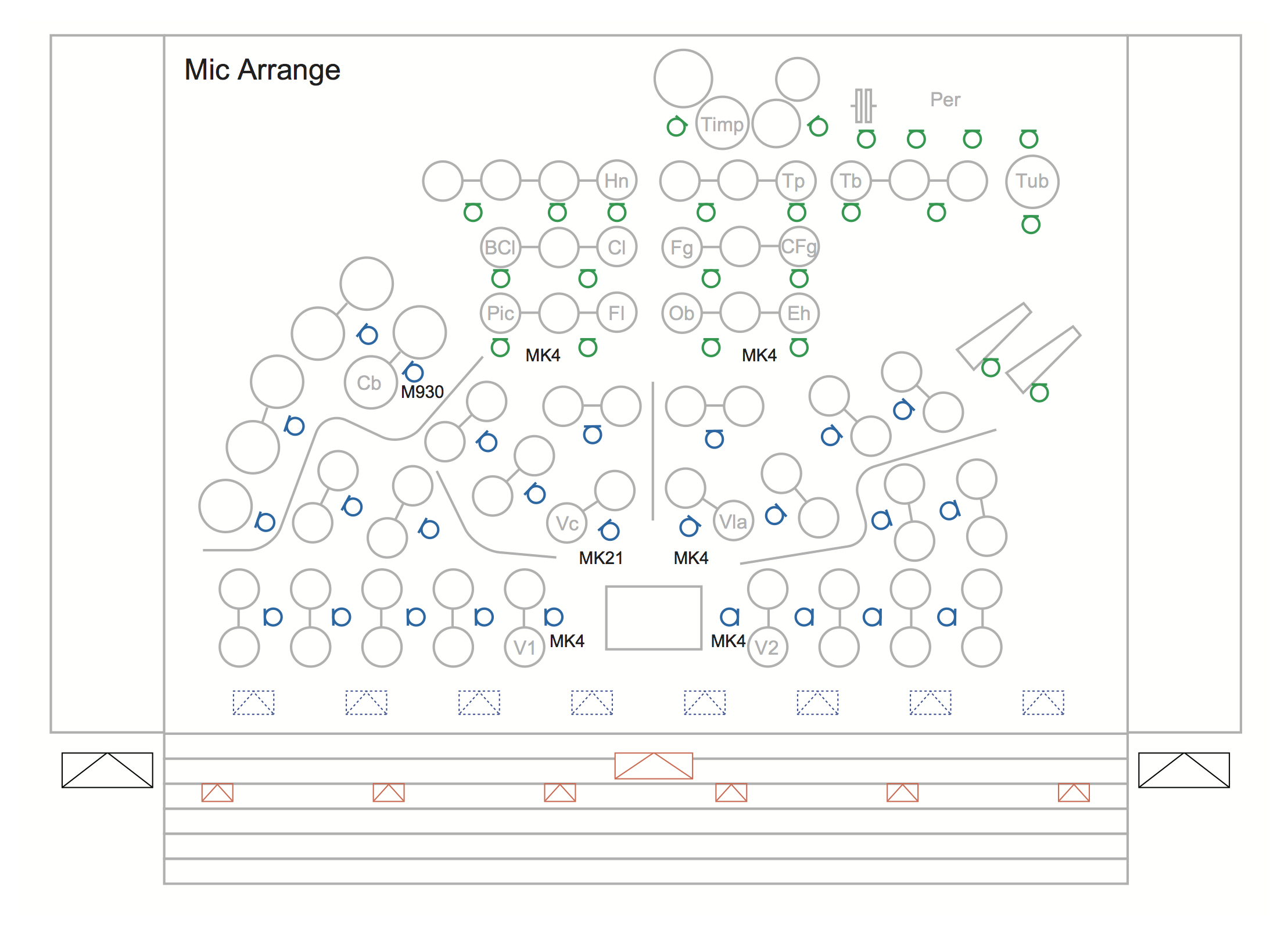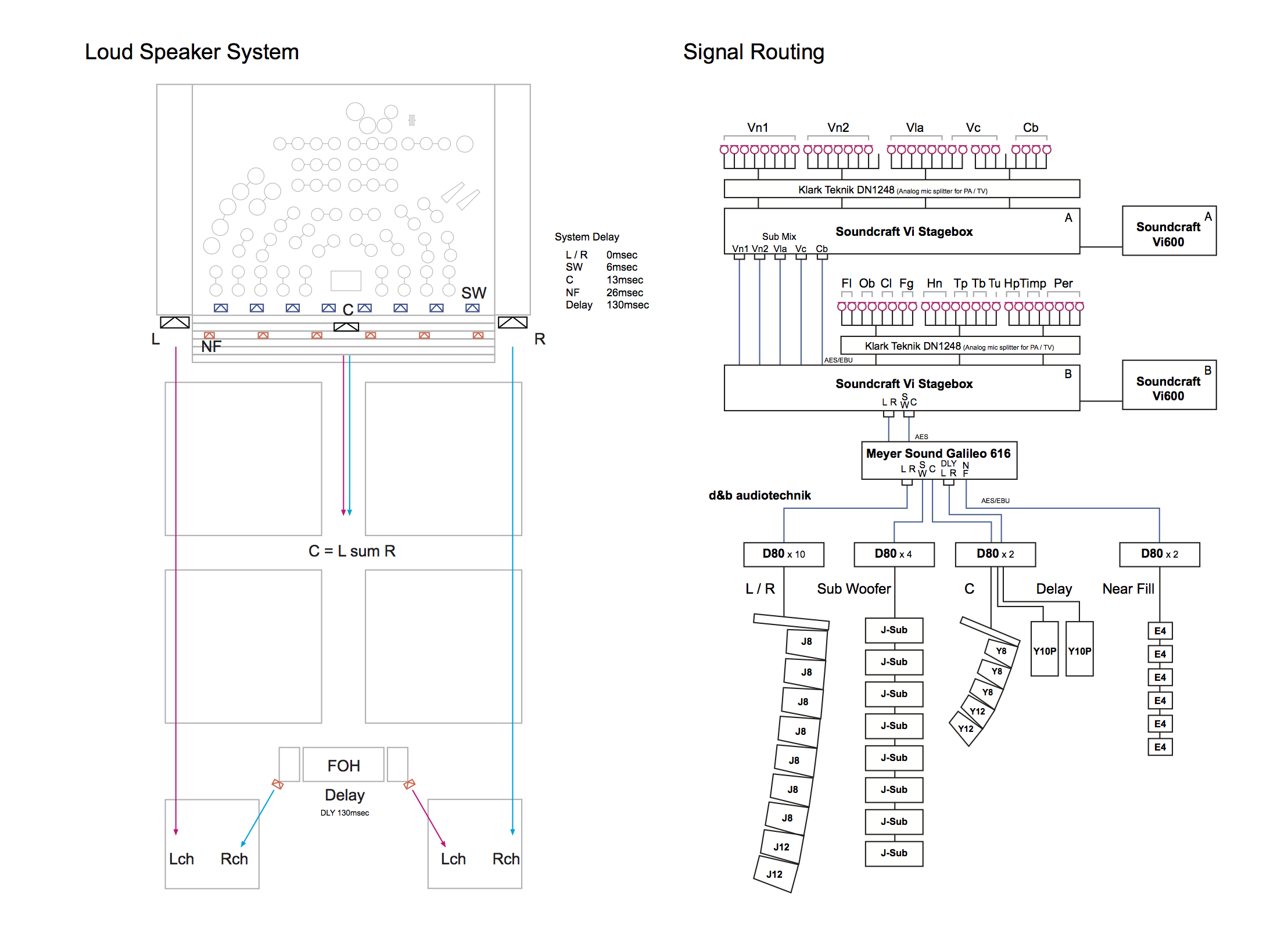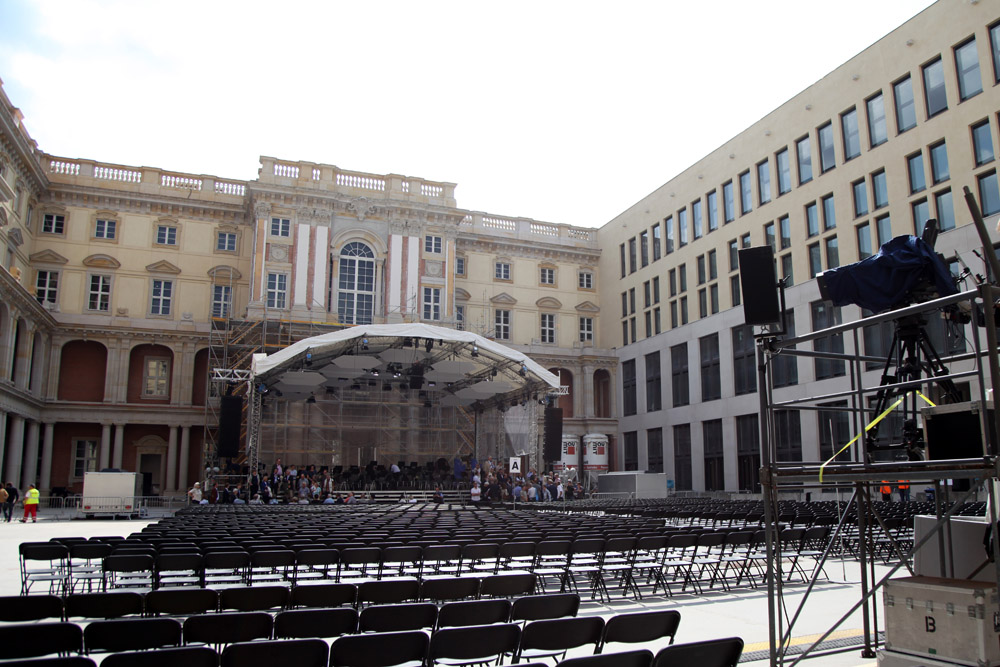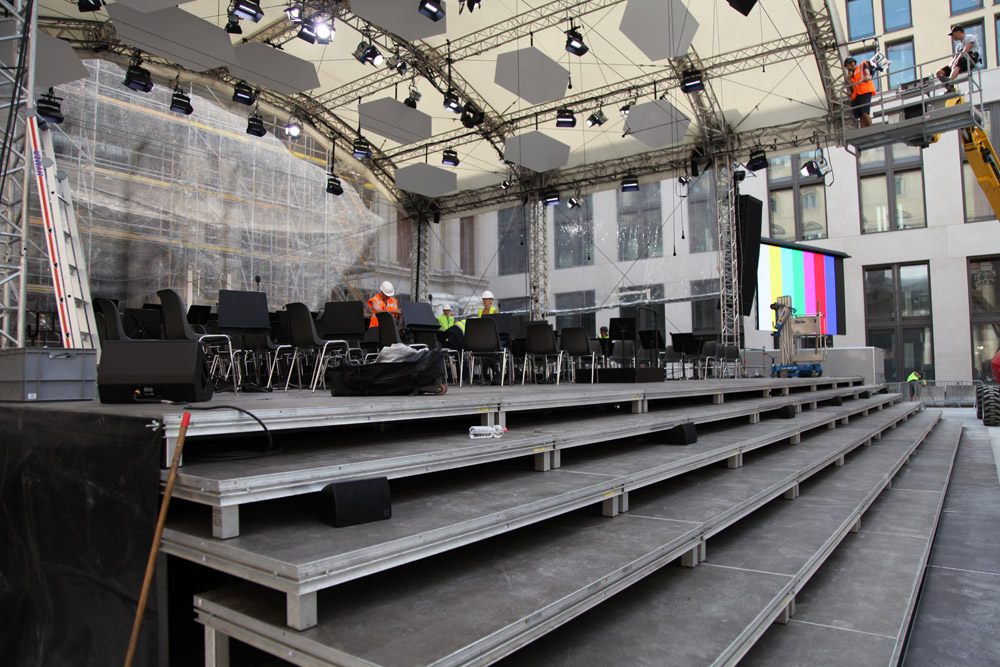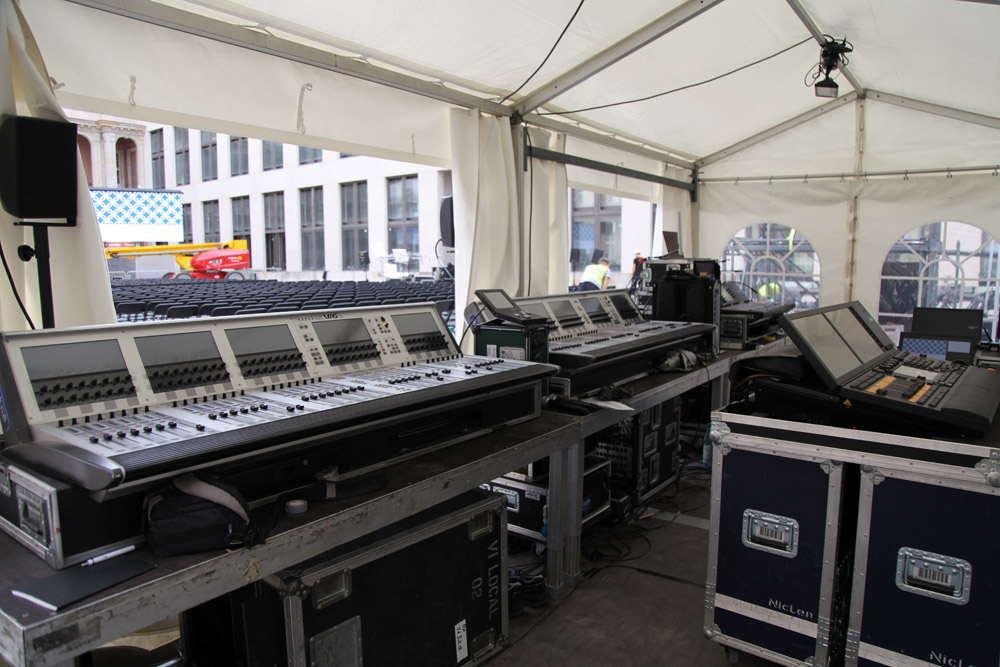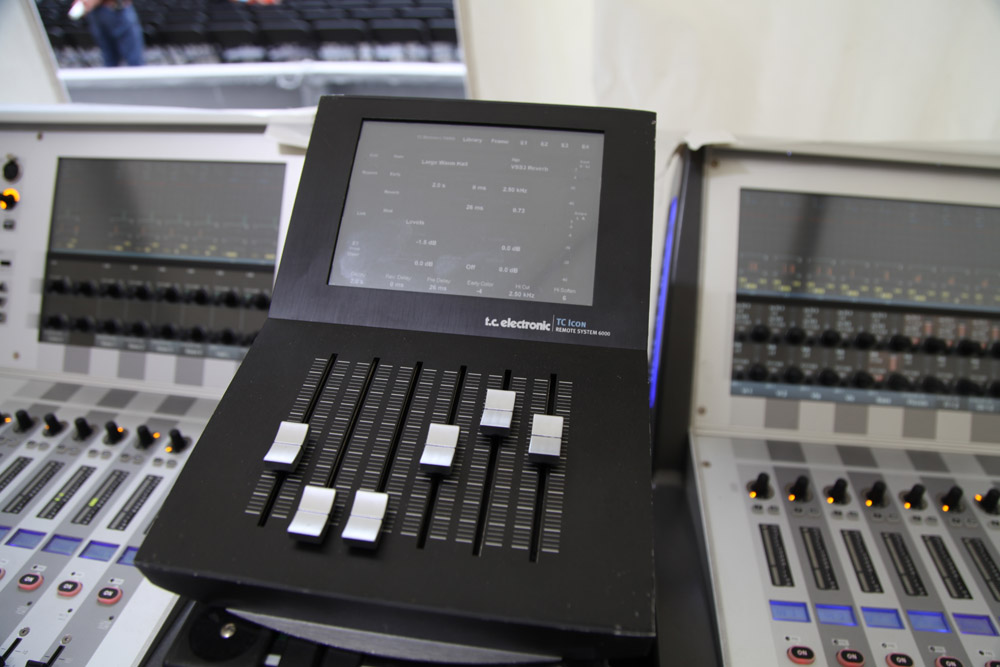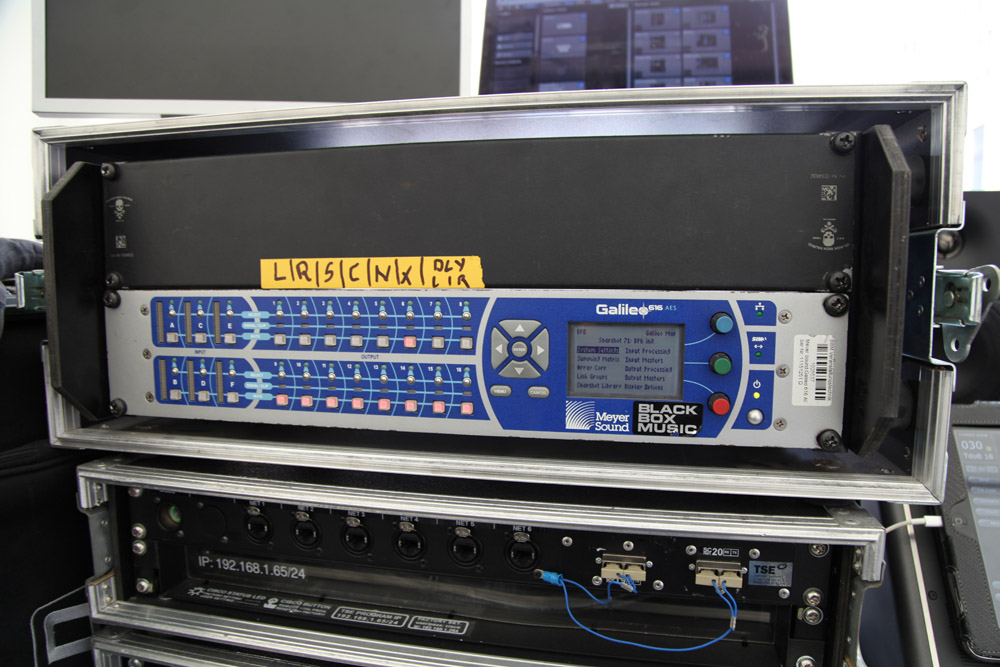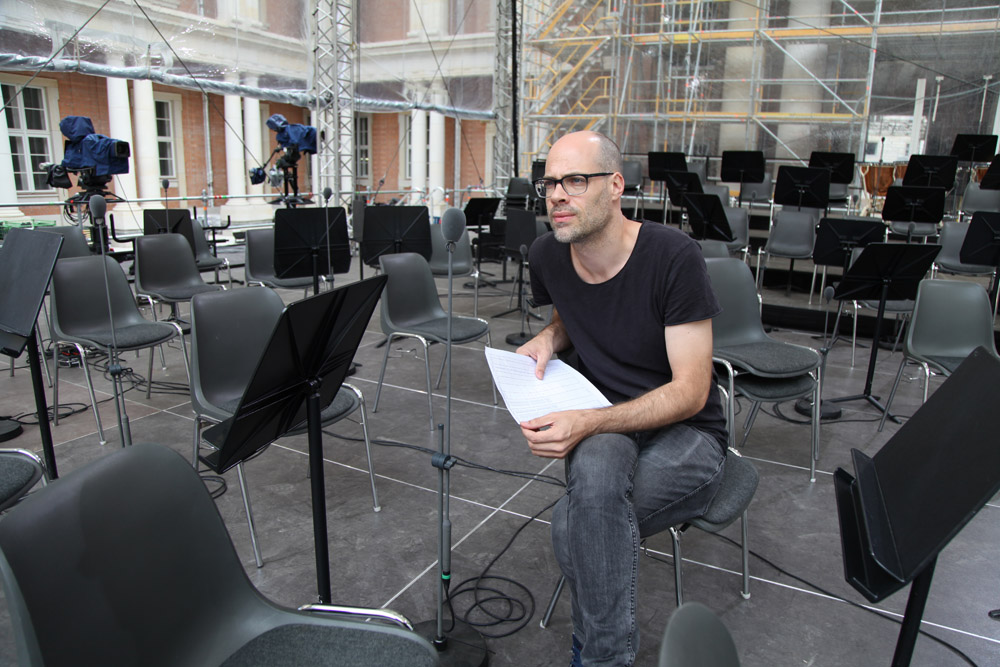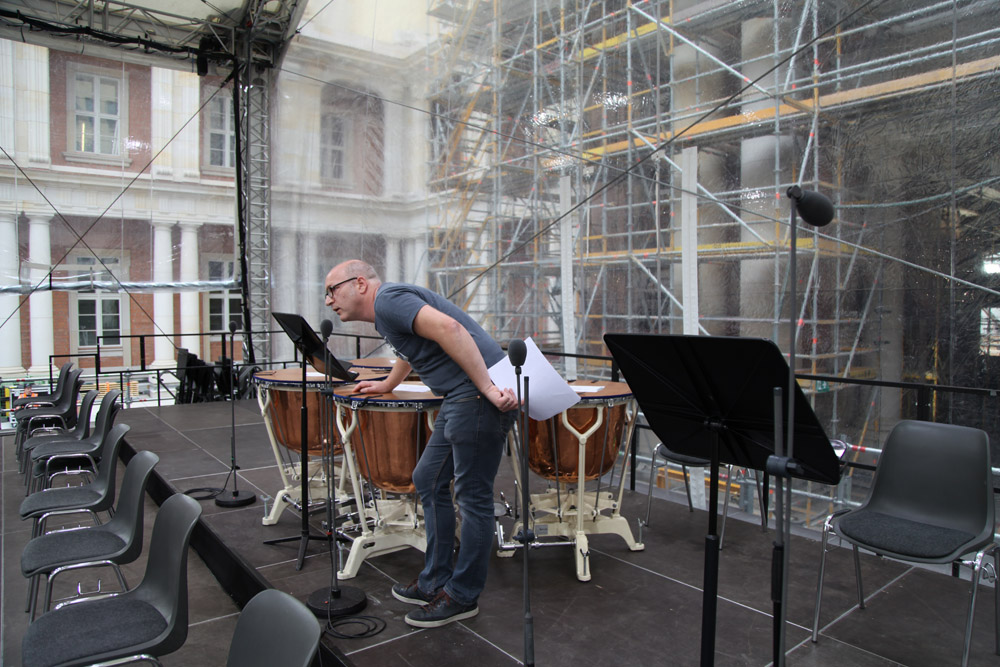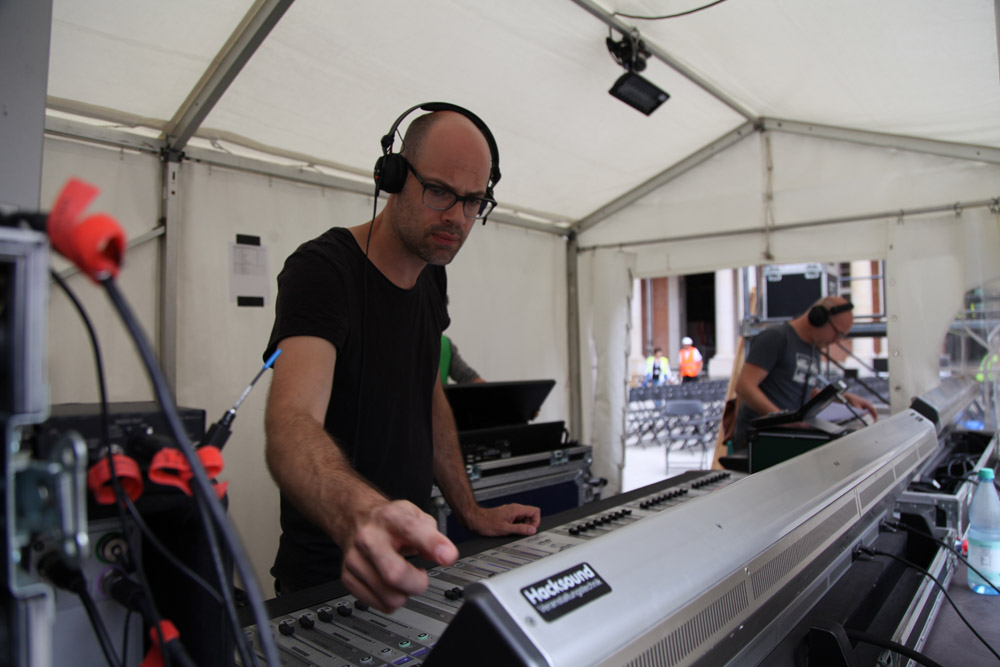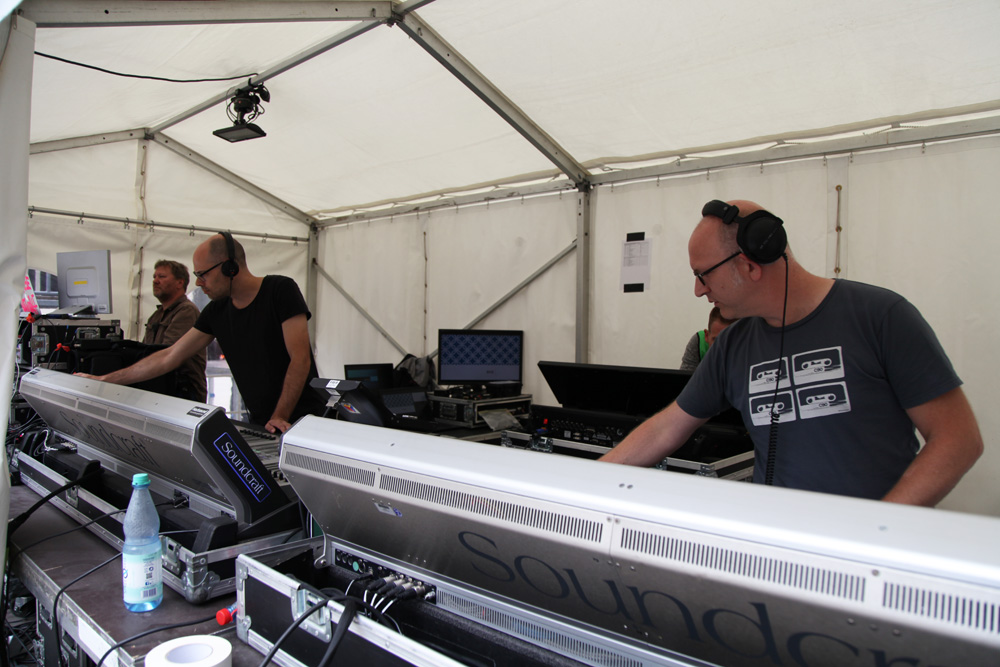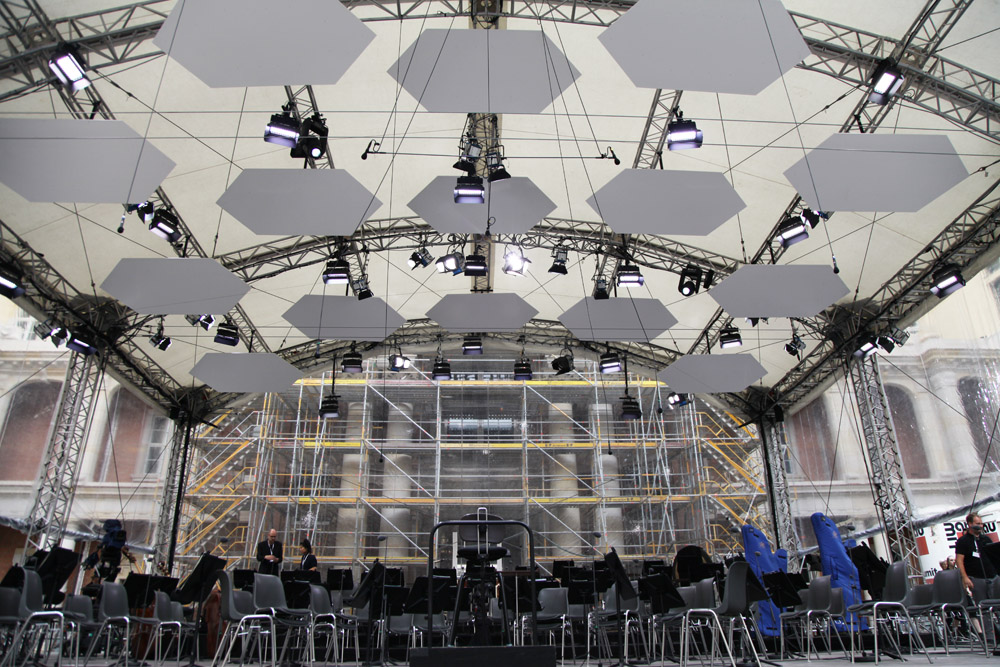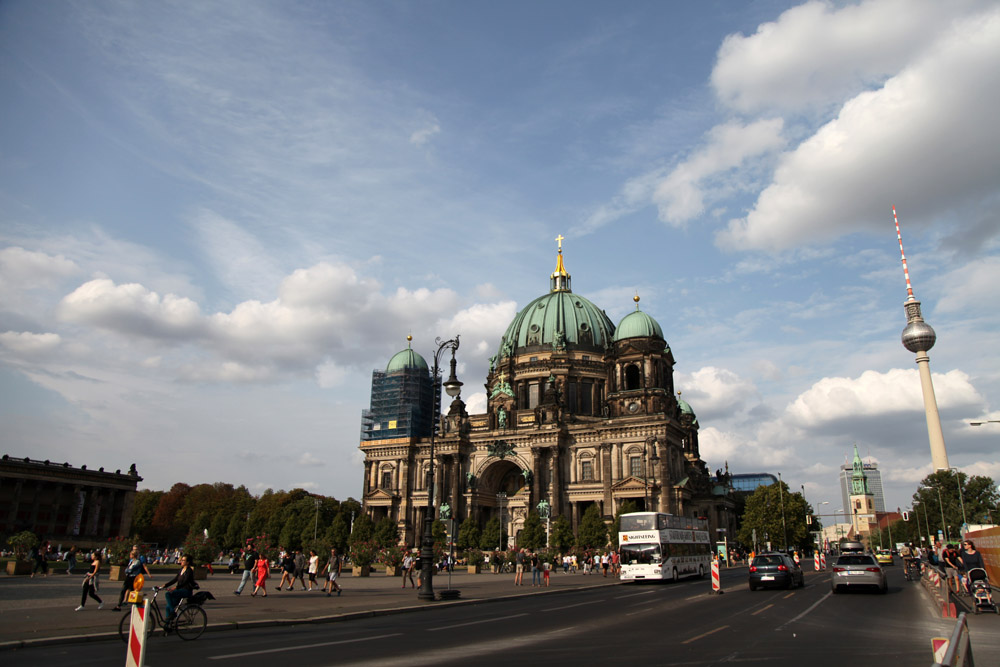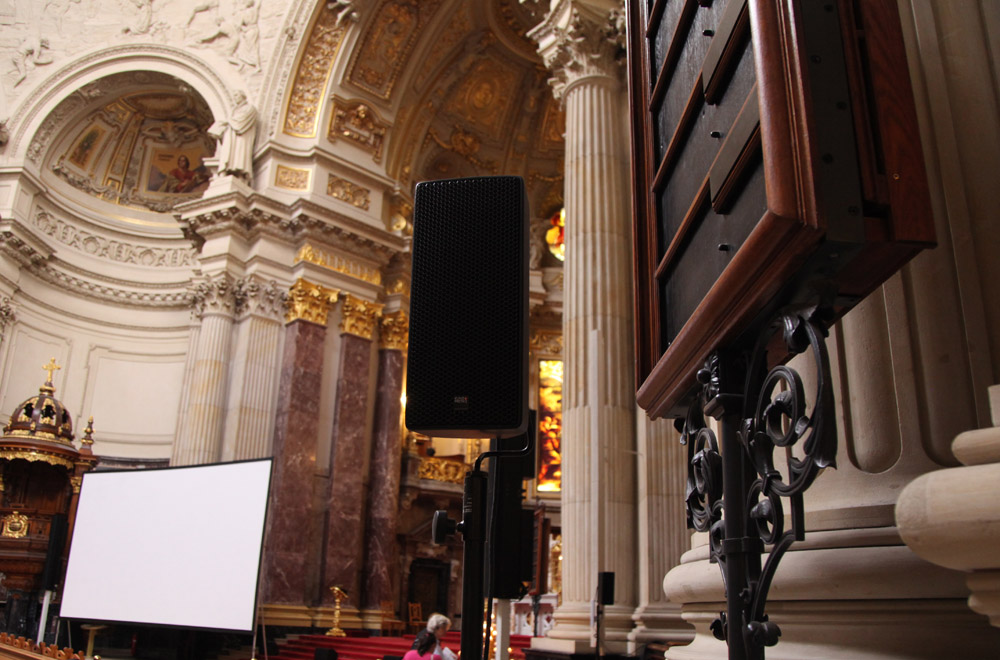Nagoya University of the Arts
Introduction :
A general concept of listening to classical music in Japan is “to listen to music in a sound proofed hall rich in acoustic.” However, turning an eye on Europe, large audience enjoy music in the open-air at a time. For example, approximately 20,000 people enjoy listening to a concert with PA at an open-air concert venue, Berlin Waldbuhne, in summer. I have been looking for an opportunity to collect data about and report on such a concert for quite a while, and this time, Mr. Marco Buttgereit, Tonmeister of BPO, kindly accepted me to collect data about the concert. In this report, I will mainly focus on reporting on sound engineering in the concert and will introduce an interview with the Tonmeister and a sound system engineer.
About the concert :
The concert took place at the Schlüterhof, an inner courtyard of the Berliner Stadtschloss, which is currently under reconstruction and scheduled to be completed in 2019, located along the Unter den Lindenleading, the main street leading from a landmark of Berlin, the Brandenburg Gate. The former Berliner Stadtschloss (Berlin Royal Palace) had been located at the place as the palace of the King of the Kingdom of Prussia and the Emperor of the German Empire since the 18th century. It was burned down by air raid in 1945, and its ruin was demolished by the government of the former German Democratic Republic in 1950 (GDR). The Republic Palace of the former GDR was built between 1973 – 1976, but it was closed after the reunification of Germany and dismantled and destroyed 2006-2008. After that, reconstruction of the Berlin Royal Palace was proposed, and the palace was decided to be rebuilt by funds from public budget and donations. The reconstruction work began in March 2013, and it is scheduled to be completed in 2019. Currently, exterior of the building looks like it is almost completed.
This concert was held as a part of an event, “Last Open Days of the Construction Site.” At first, I wondered why the concert was held at the place, but I got the point as I read a note mentioning that a summer concert was held at this same courtyard every year from 1933 to 1940 and that the former BPO performed the concert in in 1933 on the website of the Humboldt Forum, the administrator of the Berliner Stadtschloss.
The concert this time was held as a fundraiser. 1,500 tickets with the price of 295 euros were sold out, and the income will be donated for the reconstruction.
The concert started in a light rain at 4:00 p.m., and Richard Strauss’s Don Juan and Death and Transfiguration were played in the first half of the concert. About the time of the intermission, it stopped raining, and the audience enjoyed Beethoven’s Symphony No. 7 in the second half of the concert. The concert was played not only in this venue, but also on the public viewing at the Berliner Dom, which is across the Unter den Linden. Furthermore, it was also broadcasted on RBB television and the Digital Concert Hall on the internet. It was a large-scaled event.
L-R Berliner Dom, Humboldt-Box, Berliner Stadtschloss
|
Expected drawing.From Humboldt Forum web site
|
former Berliner Stadtschloss in 1900 from wikipedia.org
|
former Berliner Stadtschloss in 1920 from wikipedia.org
|
The Republic Palace of the former GDR from wikipedia.org
|
The same place, the same Orchestra from BPO web site
|
About the orchestra :
The Berliner Philharmoniker (BPO) is an orchestra, established in 1882, in the German capital city, Berlin, and it is well known as one of the world's leading orchestras. BPO has developed unique sound and performance styles especially in relation with Karajan since 1956, and it has great influences on the world of music through its numerous live performances and recordings. Claudio Abbado had served as the chief conductor of the orchestra from 1990, and Sir Simon Rattle took over the position in 2002. BPO started “Digital Concert Hall,” a web streaming service that distributes live performances and recordings from past concerts, and it also established its own label, “Berliner Philharmoniker Recordings.”
From the 2018/2019 season, which just started on August 24, a day before this concert, Kirill Petrenko, a Russian conductor who studied in Vienna and has been active especially in the field of opera music, He will become its chief conductor/artistic director in next summer 2019, season 2019 - 2020, and BPO just started a new phase.
Kirill Petrenko conducted BPO © Monika Rittershaus
|
BPO plays Richard Strauss © Monika Rittershaus
|
BPO Plays Beethoven Symphony No. 7
|
PA Team :
The PA team was organized with six people, two FOH operators and four system engineers. The FOH operators were BPO's Tonmeisters, Mr. Marco Buttgereit and Mr. Ulrich Stielau. The system engineers were Mr. Ivo König and Mr. Til Schwartz from PA system design company, IT AUDIO, and freelance engineers, Mr. Jonathan Wolff and Mr. Manfred Bamberg.
According to Mr. Buttgereit, who served as the chief FOH operator, BPO has a total of four Tonmeisters, including Mr. Buttgereit and Mr. Stielau, and they are in charges of PA/SR and live recording/mixing for contents of DCH.
According to Mr. König, who served as a system designer and the chief system enginner, he has been working with Mr. Budgerelite and other BPO tonmeisters, including at an open-air venue, Waldbühne Berlin, for a long time. Mr. Wolf oversaw d&b audiotechnik loud speaker, and Mr. Bamberg oversaw total support, including MC. Although their works were completely divided into each division of labor, I could see that there was really good communication about "how music should be re-sounded" all the time.
The team. Stielau, Buttgereit, Bamberg, Wolff, König (L-R)
|
Mixed the music by Ulrich Stielau, Marco Buttgereit
|
The men are at work! Adjust the Loud Speaker System
|
PA System :
The PA system was composed of two Soundcraft vi 600 consoles and d&b audiotechnik loud speakers, and each one of these devices was connected to Meyer Sound's Speaker Management System Galileo 616 as the core of the system. (please see the figure)
For the mixing, two consoles were used. Input from all microphones for the string section was sent to the Console A, and stereo submix was produced by Mr. Stielau. Then, stereo submix of each part of the string section was sent to the Console B.
The stereo submix of the string section and input from microphones for woodwinds, brass, and percussion sections was sent to the Console B and was processed by Mr. Buttgereit. The processed signal was outputted from the Console B as the source of L-C-R. The output to C was the synthetic signal of L and R, which was processed by the group fader next to the L-R master fader.
The L-R-C signal was inputted to Meyer sound Galileo 616 and was equalized and delayed. Then, the signal was outputted to the power amplifier. The J/Y/E series of d & b audiotechnik was used for loud speakers. L-R, Subwoofer, C, front fill, and two delay speakers behind the audience seats were installed and driven by the power amplifier D80 of d&b audiotechnik.
Loud speaker system L-C-R
|
Microphone Arrangement
|
SR System
|
|
|
Microphone arrangement :
As the concert was broadcasted by RBB, public TV station in Berlin, suspended microphones and stage microphones were set up by RBB. For PA, they used 50 microphones set on the stage floor. 26 microphones were used for the string section, and each one of these was placed for each pluto. Schoeps MK4s were used for the 1st violins, 2nd violins and violas. Schoeps MK 21s were used for cellos, and Microtech Gefell M 930s were used for double basses. Schoeps MK4s were used for woodwinds and brass sections, timpani and other percussion instruments, and a harp. In the photo, there are A-B, Decca Tree, and spot microphones for strings are suspended from the roof, but these microphones were used only for the live TV broadcasting. Each microphone was connected to an analog splitter, Klark Teknik 1248, and transmitted to the PA stagebox.
Buttgereit check the Strings Mic
|
Stielau check the Timpany Mic
|
Cb Mic, Microtech Gefell M930
|
Sound check and concert :
This time, I visited the venue and collected information on the day before the concert, in the rehearsal on the day of the concert, and in the concert.
On the day before the concert, PA team gathered at the venue, and they played a reference CD, which Mr. Buttgereit brought in for a system check, and adjusted the system.
According to Mr. König, a system engineer, the PA system was setup on the previous day, and the technical checking for the speaker system had already been done at the time. However, they checked the sound and music at various points in the seating areas and adjusted delay and equalization through the Meyer Sound Galileo 616 by using tablets connected to the system with Wi-Fi. Mahler’s Symphony No. 6 and pieces for soprano solo and orchestra were on the reference CD, and according to Mr. Buttgereit, the same materials are always used for system check no matter whether it is in the recording studio or it is for PA. They check wide dynamic range with the Mahrler 6th, and they judge about sibilance and comb filtering by the soprano solos.
After the system check, they checked input of each microphone. Mr. Buttgereit checked ones for the strings by uttering and by touching them. Then, Mr. Stielau checked ones for the woodwinds, brass, and percussions. Then, they also checked feedback margins. By raising the fader of LCR, they inspected at which level feedback occurs.
On the day of the concert, they took about one and a half hours for a rehearsal. They started the rehearsal without PA, and then, they gradually raised the fader and adjusted the balance and reverb. After that, they checked the sound from various points in the seating areas.
Unfortunately, it there was light rain when the concert started, but the audience seats were full of audience. I listened to an orchestra concert in an environment with such a large-scaled PA system for the first time, but I felt as if the sound was not being projected from the loud speakers. It was very natural sound.
Buttgereit manipulate the console
|
Stielau manipulate the console
|
15 Reflectors on the stage
|
Public viewing at the Berliner Dom :
During the concert, there was a free public viewing of the concert in the Berliner Dom across the street. Stereo sound, which was reproduced from audio signals mixed on an RBB’s outside broadcasting van for a TV broadcasting on that evening by removing its reverb, and HD video were encoded by DVB-T, and the signal was wirelessly transmitted from the Berliner Stadtschloss to the Berliner Dom. Reverberation time in the Berliner Dom, a cathedral with a huge dome, is supposedly 7 to 10 seconds, and the sound system in the cathedral was also designed by IT AUDIO. Products of Kling & Freitag (K&F), a German speaker manufacturer, were used for the speaker system. Vida L, 115 E-SP, and Gravis 12 were set up on the first floor, and a Passio was installed on the balcony on the upper floor. The audio signal was amplified by K&F System Amps with an incorporated Lake processor. During the rehearsal, I went to the cathedral and listened to the sound for a while. Even with the reverberation naturally produced in the cathedral, I could steadily sense the core of the sound, and it made me that it was exactly “the Voice of the God.”
| ||||||||||||
|
In September 2018, I did an email interview.
Marco Buttgereit, BPO Tonmeister
Q. Please let us know your career.
A. I attended the Film University Babelsberg and graduated in 2006 as Diplom-Tonmeister. Since 2001 I have been freelancing as sound engineer for several film projects and as Tonmeister in the Philharmonie Berlin, Staatsoper Berlin and Akademie der Künste. Since 2006 I am a permanent member of the sound department of the Berliner Philharmoniker, since 2015 I am head of the sound department.
Q. Why mix with L-C-R? Please let us know it.
A. We always want to achieve the best sound result for every seat of the audience. If you work without center speaker, listeners placed at the left or the right side of the auditorium would only recognize the left or right main speaker of the loudspeaker system. The reference to the orchestra would be missing. By use of even rather small center speakers we provide the possibility to locate the orchestra at its actual place. We use aux busses to generate the signals for the center as well as for the subwoofers. This gives us the opportunity to treat every instrument separately, if necessary.
Ulrich Stielau, BPO Tonmeister
Q. Please let us know your career.
A. I studied music in Rotterdam and have been working as a freelance balance engineer and musician in various locations and studios for almost 30 years until I got hired by the Berliner Philharmoniker in 2017.
Q. Please let us know about your PA/SR and Recording philosophy.
A. Regarding to classical music, my philosophy is to let it sound like an orchestra in a good concert hall without noticeable use of reinforcement technique. This is the same for recording and for PA, only the way to get there is often quite different.
Q. What is the difficult part of the PA/SR of the orchestra?
A. The most challenging thing is to find a good balance between the natural open sound, that the audience is used to in a concert hall, and the need to generate sufficient output for a much bigger audience, which is sitting in a free field without the reflections of a concert hall. In short: to make it sound loud enough for everyone without anybody noticing the amplification.
Q. What is the difference between recording and PA/SR?
A. In recording, feedback is not an issue, and you are free to choose the best sounding microphone positions. In a good room, a lot of work is done by accurate placed main microphones (A-B, Decca tree, …). In a PA-situation, feedback becomes an issue very quickly for main microphones and most of the time you have to deal with a not quite good sounding plastic stageroof. That´s why you have to work with a more closed-micing setup which doesn’t sound as natural as typically desired.
Ivo König, IT AUDIO System Enginner.
Q. Please let us know your career.
A. Til and me worked for years as freelancing audio engineers in touring business, local events and installations. While Til was later a managing director of a PA company in Berlin I was still on the road as a freelancing audio engineer. In these years we joined a lot of trainings, workshops i.e the SIM-Audio measurement training with a final exam to expand our knowledge in the audio world. In 2009 the IT AUDIO GmbH was founded with Til and me as managing directors. A lot of references you can see here.
Q. Please let us know the concept of this SR design in Berliner Schloss and Berliner Dom.
A. The goal is, to have a perfect sound reinforcement system, which is not recognized by the audience. Of course you can see it, but you shouldn’t hear it. That includes a perfect time aligned PA system which is not changing anything in the sound of the original source. In popular music sound reinforcement is part of the music, in classical music absolutely not. Nobody likes to feel a timpani in classical music like a bass drum in rock’n’roll.
Q. How was your feeling in this work?
A. Good! We have great tools like MappOnline (Meyer Sound) or ArrayCalc (d&b) to plan the positions, sizes and amount of speakers for a concert like this. Measuring with the SIM3 system (Meyer Sound) guarantees the desired quality of frequency response and time alignments. The final voicing with you and the colleges from the Philharmonie was successful and gave the system the final tune to achieve the goals described above!
Conclusion :
Fortunately, I got to see a outside live concert and I was able to interview it. This courtyard was destroyed in the war, and after the war it became a different facility, it was complicated. but at last the next year it will reborn the shape before the war. The 80 years ago in this place, planning a concert at the place where this orchestra performed a concert is very meaningful and also is deeply emotional. On the other hand, I compared with the technological aspect before 80 years and now. Now, many people have enjoyed music with high quality using such a PA / SR system. Also, this time, TV broadcasting, Internet broadcasting, live viewing was used and many people enjoyed the music. I felt once again ''what a wonderful world we alive''. I listened to music in the FOH mixing tent, It was so great music and sound. I think The SR team was connecting between the performers and the listeners by the technology. I would like to thank to BPO acceptance for this interview and Thanks to those who generously introduced their own practices and philosophy. Thank you so much.
More Information
Digital Concert Hall
Kirill Petrenko conducts Beethoven and Strauss at the Berlin Palace
This report was originally contributed to Japanese PROSOUND on Dec 2018, Vol.208 issue.
Japanese to English translate supported by Hitoshi Sugie.
